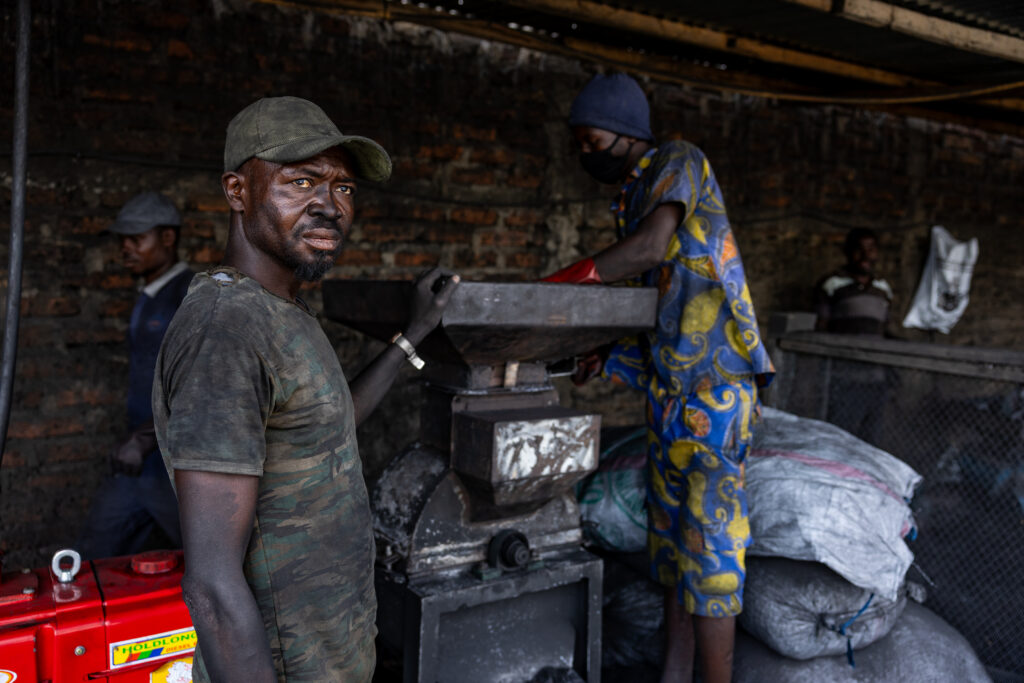Gaza, RDC, Haïti… Des violences contre les enfants “sans précédent” en 2024, dénonce l’ONU
De Gaza à la République démocratique du Congo, les violences contre les enfants en zones de conflit ont atteint des niveaux “sans précédent” en 2024, dénonce jeudi un rapport annuel de l’ONU.”En 2024, la violence contre les enfants lors des conflits armés a atteint des niveaux sans précédent, avec une hausse sidérante de 25% des violations graves par rapport à 2023″, indique le rapport du secrétaire général de l’ONU Antonio Guterres.L’ONU a “vérifié” 41.370 graves violations contre des enfants en 2024, dont 36.221 commises en 2024 et 5.149 commises précédemment mais confirmées en 2024, ce qui constitue le nombre le plus élevé depuis la mise en place de cet outil de surveillance il y a près de 30 ans. Un record qui bat celui enregistré en 2023, qui lui-même représentait une hausse de 21% par rapport à l’année précédente.Avec notamment plus de 4.500 tués et plus de 7.000 blessés, les enfants continuent “de faire les frais des hostilités incessantes” à travers la planète, déplore l’ONU.En raison d’une hausse marquante du nombre d’enfants victimes de multiples violations, le nombre d’enfants concernés par ces violences atteint 22.495.”Les cris de ces 22.495 enfants innocents qui auraient dû apprendre à lire ou jouer au ballon, mais au lieu de ça ont été obligés d’apprendre à survivre aux tirs et aux bombardements, devraient tous nous empêcher de dormir”, a lancé dans un communiqué Virginia Gamba, représentante spéciale de l’ONU sur ce dossier. “Cela doit servir de signal d’alarme. Nous sommes au point de non-retour.”Chaque année, l’ONU répertorie dans ce rapport les violations des droits des enfants (moins de 18 ans) dans une vingtaine de zones de conflit dans le monde et dresse en annexe la “liste de la honte” des responsables de ces violations qui incluent enfants tués et mutilés, recrutements, enlèvements, refus d’accès humanitaire ou violences sexuelles.- Viols collectifs -Les forces armées et de sécurité israéliennes, qui avaient été inscrites sur la liste l’an dernier, avec le Hamas, y sont toujours.Les territoires palestiniens occupent d’ailleurs la première place de ce triste classement, avec plus de 8.500 violations graves en très grande majorité attribuées aux forces israéliennes, dont plus de 4.800 à Gaza. Cela inclut 1.259 enfants palestiniens tués à Gaza, selon les chiffres confirmés par l’ONU qui dit être en train de vérifier des informations sur 4.470 enfants supplémentaires tués en 2024 dans le territoire palestinien ravagé par la guerre provoquée par l’attaque sans précédent du Hamas contre Israël le 7 octobre 2023.Le rapport met également en cause les opérations d’Israël au Liban, où plus de 500 enfants ont été tués ou blessés par l’armée israélienne l’an dernier.Après les Territoires palestiniens, la République démocratique du Congo (plus de 4.000 violations graves), la Somalie (plus de 2.500), le Nigeria (près de 2.500) et Haïti (plus de 2.200) ont enregistré le plus de violences contre les enfants en 2024.En Haïti, où ces violations ont augmenté de 490% en un an, la principale coalition de gangs, “Viv Ansanm” (Vivre ensemble), a été ajoutée sur la “liste de la honte”, pour le recrutement d’enfants, les meurtres ou encore les viols collectifs. Une première qui vise “probablement le plus brutal” des gangs qui ravagent le pays, a commenté un responsable onusien.Nouveau sur la liste également le cartel colombien Clan del Golfo accusé d’enrôler des enfants. La Colombie enregistre plus généralement une hausse importante des cas de recrutements forcés, avec 450 enfants en 2024 contre 262 l’année précédente.Sont d’autre part toujours sur “la liste de la honte” l’armée soudanaise et les paramilitaires des Forces de soutien rapide qui s’affrontent au Soudan depuis plus de deux ans, ainsi que l’armée russe pour ses actions en Ukraine où le rapport enregistre une hausse de 105% des violations graves entre 2023 et 2024.
Gaza, RDC, Haïti… Des violences contre les enfants “sans précédent” en 2024, dénonce l’ONU
De Gaza à la République démocratique du Congo, les violences contre les enfants en zones de conflit ont atteint des niveaux “sans précédent” en 2024, dénonce jeudi un rapport annuel de l’ONU.”En 2024, la violence contre les enfants lors des conflits armés a atteint des niveaux sans précédent, avec une hausse sidérante de 25% des violations graves par rapport à 2023″, indique le rapport du secrétaire général de l’ONU Antonio Guterres.L’ONU a “vérifié” 41.370 graves violations contre des enfants en 2024, dont 36.221 commises en 2024 et 5.149 commises précédemment mais confirmées en 2024, ce qui constitue le nombre le plus élevé depuis la mise en place de cet outil de surveillance il y a près de 30 ans. Un record qui bat celui enregistré en 2023, qui lui-même représentait une hausse de 21% par rapport à l’année précédente.Avec notamment plus de 4.500 tués et plus de 7.000 blessés, les enfants continuent “de faire les frais des hostilités incessantes” à travers la planète, déplore l’ONU.En raison d’une hausse marquante du nombre d’enfants victimes de multiples violations, le nombre d’enfants concernés par ces violences atteint 22.495.”Les cris de ces 22.495 enfants innocents qui auraient dû apprendre à lire ou jouer au ballon, mais au lieu de ça ont été obligés d’apprendre à survivre aux tirs et aux bombardements, devraient tous nous empêcher de dormir”, a lancé dans un communiqué Virginia Gamba, représentante spéciale de l’ONU sur ce dossier. “Cela doit servir de signal d’alarme. Nous sommes au point de non-retour.”Chaque année, l’ONU répertorie dans ce rapport les violations des droits des enfants (moins de 18 ans) dans une vingtaine de zones de conflit dans le monde et dresse en annexe la “liste de la honte” des responsables de ces violations qui incluent enfants tués et mutilés, recrutements, enlèvements, refus d’accès humanitaire ou violences sexuelles.- Viols collectifs -Les forces armées et de sécurité israéliennes, qui avaient été inscrites sur la liste l’an dernier, avec le Hamas, y sont toujours.Les territoires palestiniens occupent d’ailleurs la première place de ce triste classement, avec plus de 8.500 violations graves en très grande majorité attribuées aux forces israéliennes, dont plus de 4.800 à Gaza. Cela inclut 1.259 enfants palestiniens tués à Gaza, selon les chiffres confirmés par l’ONU qui dit être en train de vérifier des informations sur 4.470 enfants supplémentaires tués en 2024 dans le territoire palestinien ravagé par la guerre provoquée par l’attaque sans précédent du Hamas contre Israël le 7 octobre 2023.Le rapport met également en cause les opérations d’Israël au Liban, où plus de 500 enfants ont été tués ou blessés par l’armée israélienne l’an dernier.Après les Territoires palestiniens, la République démocratique du Congo (plus de 4.000 violations graves), la Somalie (plus de 2.500), le Nigeria (près de 2.500) et Haïti (plus de 2.200) ont enregistré le plus de violences contre les enfants en 2024.En Haïti, où ces violations ont augmenté de 490% en un an, la principale coalition de gangs, “Viv Ansanm” (Vivre ensemble), a été ajoutée sur la “liste de la honte”, pour le recrutement d’enfants, les meurtres ou encore les viols collectifs. Une première qui vise “probablement le plus brutal” des gangs qui ravagent le pays, a commenté un responsable onusien.Nouveau sur la liste également le cartel colombien Clan del Golfo accusé d’enrôler des enfants. La Colombie enregistre plus généralement une hausse importante des cas de recrutements forcés, avec 450 enfants en 2024 contre 262 l’année précédente.Sont d’autre part toujours sur “la liste de la honte” l’armée soudanaise et les paramilitaires des Forces de soutien rapide qui s’affrontent au Soudan depuis plus de deux ans, ainsi que l’armée russe pour ses actions en Ukraine où le rapport enregistre une hausse de 105% des violations graves entre 2023 et 2024.
Mondial des clubs: battu par Botafogo, le PSG redescend de son olympe
Après son triomphe contre l’Atlético, le Paris SG est redescendu sur Terre en s’inclinant contre Botafogo (1-0) jeudi au Rose Bowl de Pasadena et va devoir gagner contre Seattle lundi pour rallier les huitièmes de finale du Mondial des clubs.Le mélange de décontraction et de sérieux des Parisiens depuis leur arrivée à Los Angeles avait produit un excellent résultat contre l’Atlético (4-0) dimanche. Mais beaucoup moins jeudi, contre le club de John Textor, aussi propriétaire de Lyon, qui a dû savourer cette rare victoire contre son homologue Nasser Al-Khelaïfi.Le PSG a étalé sa supériorité technique pendant la majorité du match, mais s’est aussi parfois embourbé dans la bataille physique que souhaitait Botafogo. Et c’est d’ailleurs à l’issue d’une série de duels perdus dans le rond central que le PSG a été transpercé. Jefferson Savarino a subitement lancé en profondeur Igor Jesus, lequel a profité sur son tir d’une déviation de Willian Pacho pour tromper Gianluigi Donnarumma (36). L’une des deux ou trois seules situations de Botafogo sur tout le match.De quoi agacer un peu plus les Parisiens, déjà frustrés de ne pas voir leurs dribbles et leurs passes récompensées par un but. Khvicha Kvaratskhelia et Désiré Doué, en particulier, ont multiplié les crochets sans que cela n’aboutisse à un but. La meilleure occasion parisienne est en fait survenue dès la 2e minute par le tir vers la lucarne opposée de “Kvara”, magnifiquement détourné par John Victor.Gonçalo Ramos, titularisé pour la deuxième fois d’affilée en l’absence d’Ousmane Dembélé blessé, n’a que très peu pesé, à l’exception d’un coup franc où il a failli provoquer un but contre son camp d’un défenseur adverse.- Frisson -Et si Warren Zaïre-Emery et Senny Mayulu n’ont pas démérité, le placement sur le banc de Joao Neves et Fabian Ruiz s’est grandement fait sentir dans la construction et la récupération. D’ailleurs, Luis Enrique, se rendant compte que le match serait plus difficile que prévu, a fait rentrer les deux milieux dès la 55e minute, ainsi que Bradley Barcola pour son retour de blessure et Nuno Mendes.Paris a alors accéléré, notamment via un remuant Bradley Barcola. Un coup franc très bien placé, tiré juste au-desus par Kvaratskhelia, a fait passer un énorme frisson dans les supporters brésiliens, placés juste derrière le but (90+1).Mais globalement, l’équipe de Botafogo était suffisamment bien regroupée et disciplinée pour ne pas céder malgré les coups de boutoir parisiens, finalement peu nombreux. Et il s’en est même fallu de la vigilance de Willian Pacho (62e) et de Lucas Beraldo (67e) pour éviter un deuxième but des Brésiliens.”Dans les compétitions courtes, il faut être là au bon moment, on ne l’a pas fait et on le paie”, a regretté Luis Enrique.Cette défaite est la première du PSG depuis le 3 mai contre Strasbourg (2-1), avec une équipe alors encore plus remaniée. Elle vient quelque peu doucher l’enthousiasme immaculé qui entoure le club depuis son arrivée à “L.A.” Le dernier match de groupe à Seattle s’annonce un peu plus tendu, fût-il contre les Sounders, battus lors des deux premières journées.”C’est une compétition très courte, et on peut sortir très rapidement. J’ai déjà participé à beaucoup de Coupes du monde, c’est difficile”, a réagi Luis Enrique. “Personne ne sait ce qui peut se passer, il faut bien préparer le troisième match”, a-t-il prévenu.Le PSG, grâce à sa large victoire du premier match, synonyme de bonne différence de buts, peut encore terminer premier si Botafogo perd. Une élimination paraît impensable. Mais il ne faudra pas arriver trop décontracté.
Chad hopes ‘green charcoal’ can save vanishing forestsFri, 20 Jun 2025 05:53:20 GMT
As they zigzagged from one machine to another in the searing African sun, the workers were covered in black soot.But the charcoal they were making is known as “green”, and backers hope it can save impoverished Chad from rampant deforestation.Chad, a vast, landlocked country of 19 million people perched at the crossroads of north and …
Chad hopes ‘green charcoal’ can save vanishing forestsFri, 20 Jun 2025 05:53:20 GMT Read More »
Rice prices double in Japan as inflation accelerates
The price of rice doubled in Japan in the 12 months to May, data showed Friday, as an acceleration in inflation piled fresh pressure on Prime Minister Shigeru Ishiba ahead of key elections next month.Polls for parliament’s upper house are crucial for Ishiba after public support for his administration tumbled to its lowest level since he took office in October, partly because of frustration over the cost of living.One of the main sources of anger has been the surging cost of the food staple, which has rocketed for months owing to shortages caused by a variety of reasons including supply chain snarls.The price of the grain rocketed 101 percent year-on-year in May, having jumped 98.4 percent in April and more than 92.5 percent in March.That helped push core inflation, which excludes volatile fresh food prices, to a forecast-topping 3.7 percent — its highest level since January 2023 — and up from 3.5 percent in April.The rice crisis has led the government to take the rare step of releasing its emergency stockpile since February, which it usually only ever did during disasters.But rice is not the only thing pushing inflation up: electricity bills jumped 11.3 percent in May, while gas fees rose 5.4 percent, according to Friday’s data.Excluding energy and fresh food, consumer prices rose 3.3 percent, compared with April’s 3.0 percent.”Since I’m a temp worker, my salaries have remained stagnant for years, and I see no sign of change in the years ahead,” Chika Ohara, 52, told AFP on a Tokyo street. “But prices are going up nonetheless and I feel the impact,” she said. – Cash handouts -To help households combat the cost of living, Ishiba has pledged cash handouts of 20,000 yen ($139) for every citizen, and twice as much for children, ahead of the election.The 68-year-old leader’s coalition was deprived of a majority in the powerful lower house in October as voters vented their anger at rising prices and political scandals.It was the worst election result in 15 years for the Liberal Democratic Party (LDP), which has governed Japan almost continuously since 1955.The Bank of Japan has been tightening monetary policy since last year as inflation crept up but worries about the impact of US tariffs on the world’s number four economy has forced it to take a slower approach. Economists predicted a growth slowdown ahead.Earlier this week it kept interest rates unchanged and said it would taper its purchase of government bonds at a slower pace.”Policy flip-flops and delayed pass-through from producers to consumers mean inflation will slow only gradually in the coming months,” said Stefan Angrick of Moody’s Analytics.”This will keep a sustained pickup in real wages out of reach, and with it a meaningful uptick in consumption.”Factors behind the rice shortages include an intensely hot and dry summer two years ago that damaged harvests nationwide.Since then some traders have been hoarding rice in a bid to boost their profits down the line, experts say.The issue was made worse by panic-buying last year prompted by a government warning about a potential “megaquake” that did not strike.Intensifying fighting between Iran and Israel was also adding upward pressure on energy prices, posing a further risk to the Japanese economy.





